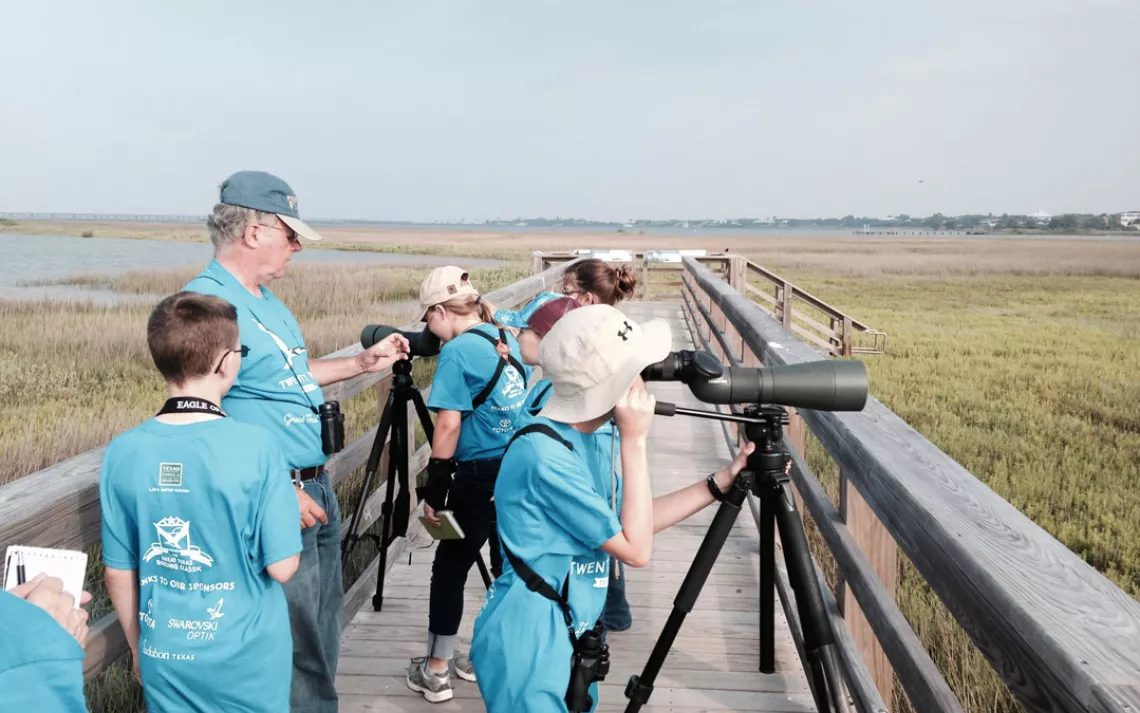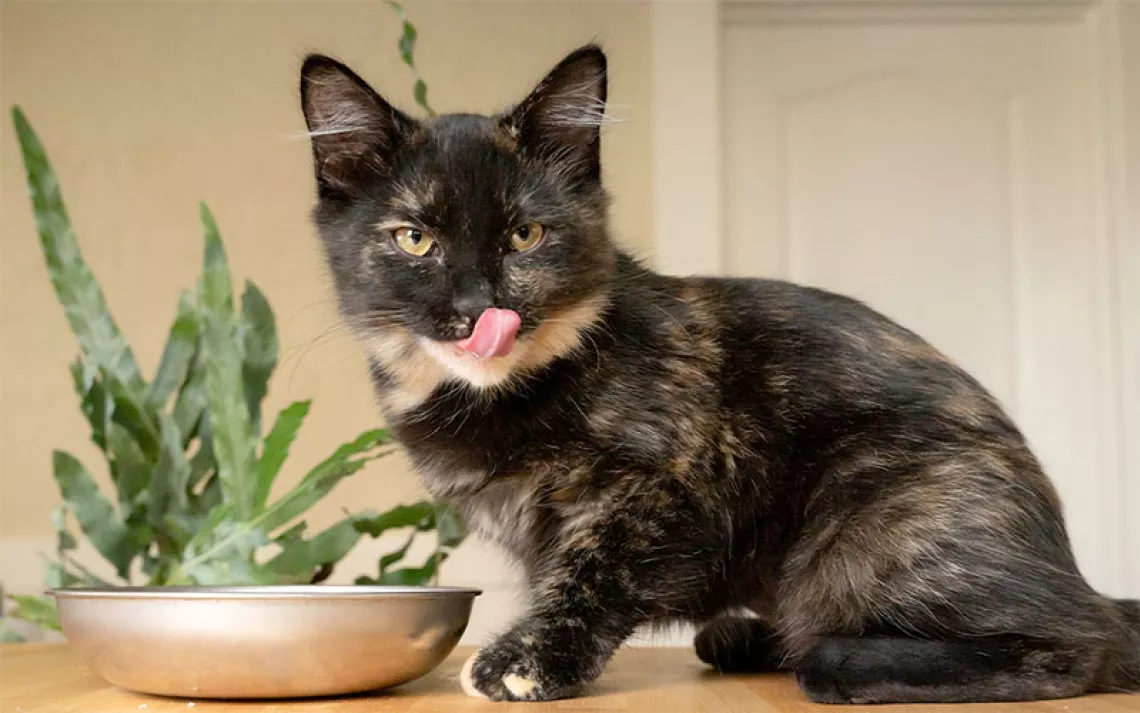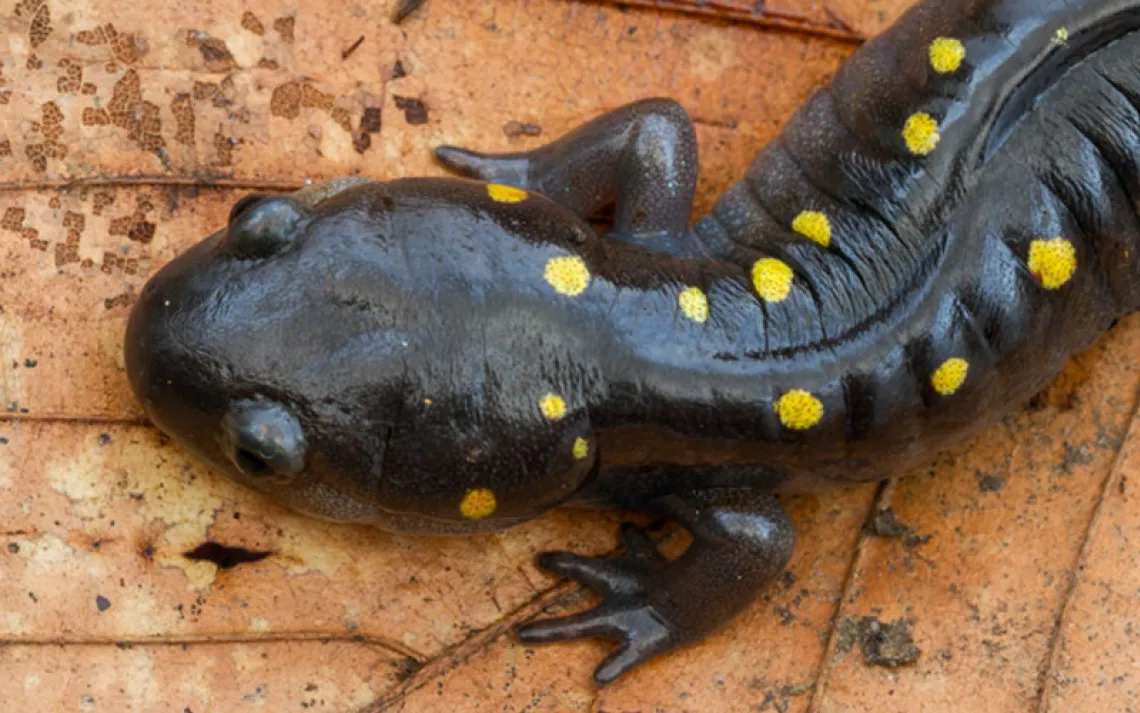At This Texas School, Birding is the Big Game
Students in the Lone Star State are getting their binoculars out and their competitive birding game on

The Birdacious Buntings searching for birds | Photo by Martha McCleod
Football may be king in Texas, but one of the fastest growing youth sports in the state may actually be . . . competitive birding?
For the fledgling ornithologists who compete each April in the Great Texas Birding Classic—the birding equivalent of the state playoffs—Friday Night Lights have given way to Saturday Morning Pre-Dawn. In the Gliders division, teenagers race to find the greatest number of birds in 24 hours, while under-13 Roughwings participants compete in an eight-hour window. Up to 20 youth teams across the state participate, each composed of three to five students and at least one experienced mentor who verifies every sighting—but can’t point out or identify birds themselves.
The fourth- and fifth-grade birding teams at Fulton Learning Center, an elementary school that serves the twin Gulf Coast communities of Rockport-Fulton, are the undisputed powerhouses of the Roughwings division. Prior to the 2015-16 season, Fulton teams had placed first or second statewide for six years running. Science teacher Martha McLeod started the program as a way to encourage students to spend more time in nature. “Rockport is a birding mecca,” she says, “but so many of our kids stay inside because of technology, or because their parents are busy working two or three jobs.”
Tryouts for this year’s competition were held in September. More than 100 Fulton students vied for the chance to participate in the Classic by identifying bird families from silhouettes on a three-page test. Fifteen students were selected and eventually divided into the fifth-grade team, Birdacious Buntings, and two fourth-grade teams, Wacky Warblers and Outstanding Orioles. Weekday 7 A.M. practices led by McLeod and volunteer mentors from the local Aransas Bird and Nature Club, which also donated binoculars and field guides, began right away. At each session, McLeod posted pictures of 10 unfamiliar birds on a bulletin board, and students worked in groups using their field guides. After 30 minutes, they shared guesses and discussed their reasoning with the mentors.
“I had absolutely no clue what most of these birds were,” says Kyleigh Karl of the Birdacious Buntings. “Before I started, I pretty much only knew what a sea gull was. And it isn’t even really a sea gull—its real name is laughing gull.”
“Their minds are just sponges,” adds mentor Bron Rorex, a retired nurse and regional director for the Texas Ornithological Society. “They pick it up so much faster than adults can.”
In October, team members began heading out before dawn on monthly Saturday field trips to one of the numerous local birding hot spots. In the field, students learned to use binoculars and work cooperatively with others. “I really learned what teamwork is,” Karl explains. “If two people saw it, and the rest of the team didn’t, it didn’t count, so you all needed to pay attention all the time.”
By spring, McLeod felt confident that all 15 team members could identify nearly 150 birds, many by both sight and song. Even so, the young birders couldn’t avoid the pre-game jitters. “I was really nervous,” fellow Birdacious Buntings fifth grader Kate Hill confesses, “but also excited to see how many birds we would get.”
McLeod knew that of the three teams, the Birdacious Buntings—all of whose members had been birding at Fulton for two years—had the best chance to claim the unofficial, though still coveted, prize of statewide champion. (Texas Parks and Wildlife gives official awards on a region-by-region basis only.) But when the big day arrived on April 26, a southeast wind blasted through the Gulf Coast, and the migratory birds all hunkered down to wait out the weather. The Birdacious Buntings still found 103 species—good enough for first place in their region but dozens less than they’d hoped for. Meanwhile, an upstart squad from the Rio Grande Valley tallied a near-record 142 and won the unofficial state championship.
Initially, the Fulton students were a little disappointed with their second-place statewide finish. “The kids are very competitive,” Rorex tells me. “They just die to find out—did they come in first or what?”
According to McLeod, though, the most important part of the Classic isn’t winning or losing. “The biggest thing is making the students aware of who shares our ecosystem with us. When I get kids looking through a spotting scope at a Baltimore oriole for the first time, it’s like, ‘I didn’t know that there were birds this beautiful in the world.’”
 The Magazine of The Sierra Club
The Magazine of The Sierra Club



